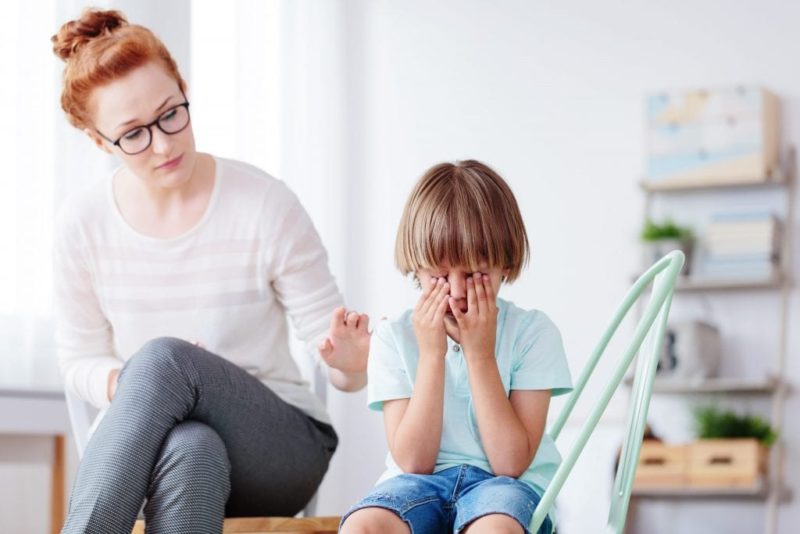
Growing with Emotions: How Children Learn to Manage Big Feelings
Emotions are big, and for children, they’re often too big to handle alone. If you’ve ever seen your child go from calm to chaotic in seconds, you’re not alone. Emotional ups and downs are part of childhood, but emotional regulation - the ability to understand and manage those feelings - is a skill that children develop over time with the right support.
As pediatric occupational therapists (OTs), we play a vital role in supporting this development. We don’t just focus on motor skills or daily routines; we look at the whole child, including how their brain and body work together to manage emotions.
Let’s explore how emotional regulation develops, what affects it, and how OTs can help children and families to build these essential life skills.
🧠 What is Emotional Regulation, Really?
Emotional regulation isn’t about “controlling” feelings or stopping tears. It’s about helping children understand what they feel, why they feel it, and how to respond in ways that keep them safe, connected, and functional. It's the foundation for social skills, learning, independence, and well-being.
When emotional regulation is difficult, children might:
- ♦ Become overwhelmed easily
- ♦ Show extreme reactions (crying, hitting, withdrawing)
- ♦ Struggle to calm down after getting upset
- ♦ Avoid new tasks or interactions
- ♦ Have difficulty in school or peer settings
While every child is different, these are not signs of “bad behavior.” They are signs that a child is still developing the tools to manage their internal world and this is where OTs step in.
🧠 How Emotional Regulation Develops Over Time
Just like crawling before walking, emotional regulation develops in stages:
👶 Infants (0–2 years)
Infants rely entirely on caregivers for co-regulation - being held, rocked, or soothed by another person helps them calm down. These early interactions lay the foundation for future self-regulation.
🚼 Toddlers (2–3 years)
At this age, children begin to express emotions more clearly often with intensity. They may try simple strategies like covering their eyes when scared, but they still need adult support to regulate.
🎨 Preschoolers (3–6 years)
Children start using basic strategies like walking away, asking for help, or distracting themselves. However, tantrums are still common, especially when they’re tired, overstimulated, or frustrated.
📚 School-Age (6–12 years)
Children become more aware of their emotions and can start using more thoughtful coping skills like problem-solving or self-talk. Peer dynamics and academic demands also influence their emotional responses. OTs often help here by building social-emotional coping strategies, self-monitoring skills, and resilience.
🌟 Adolescents (12+ years)
Teens have more advanced reasoning but still experience intense emotions. Their brains are still developing, particularly in areas responsible for impulse control and planning, so emotional ups and downs are still expected. OTs support adolescents through body-based strategies, emotional literacy, and regulation habits that promote independence.
🌈 What Influences Emotional Regulation?
A child’s ability to manage emotions is shaped by several factors:
- ♦ Temperament: Some children are naturally more sensitive or reactive than others.
- ♦ Attachment and relationships: Secure, consistent caregivers build a sense of safety that supports regulation.
- ♦ Life experiences: Trauma, transitions, or stress can impact emotional stability.
- ♦ Cognitive and language development: Understanding, labeling, and communicating emotions are key parts of regulation.
- ♦ Sensory processing: How a child processes information from their environment (touch, sound, movement) can significantly affect their ability to stay regulated.
🌱 Neurodevelopmental Disorders and Emotional Regulation
Children with neurodevelopmental conditions like Autism Spectrum Disorder (ASD), Attention-Deficit Hyperactivity Disorder (ADHD), and Sensory Processing Differences often experience the world in a more intense or unpredictable way. Their emotional responses can seem "bigger," more sudden, or harder to manage - not because they lack effort, but because their brains and bodies are wired differently.
Here’s how that might look:
- ♦ Children with ASD may struggle to identify emotions, read social cues, or shift attention away from overwhelming thoughts. Changes in routine, sensory overload, or misunderstood communication can lead to emotional dysregulation.
- ♦ Children with ADHD may experience quick emotional shifts, low frustration tolerance, and impulsivity. Their challenges with attention and inhibition can make it harder to pause and reflect on what they're feeling in the moment.
- ♦ Children with sensory processing differences might feel emotionally “on edge” because their bodies are constantly working to manage input from the environment (e.g., noise, lights, movement). When sensory needs go unmet, emotional reactions may be amplified.
For these children, traditional behavior management techniques may fall short because the root of the struggle isn’t behavioral, it’s neurological and sensory-based. That’s where OT can make a powerful difference.
🖐️ The OT Perspective: Why Sensory Matters in Emotional Regulation
Pediatric occupational therapists are trained to view emotional regulation through both a neurological and sensory integration lens.
Many children who struggle with emotional regulation also show signs of sensory processing differences. For example:
- ♦ A child who is overwhelmed by loud noises may have a meltdown in a crowded room.
- ♦ A child who seeks movement might struggle to sit still during lessons and become frustrated when asked to stop moving.
- ♦ A child who avoids touch might react aggressively when others get too close.
From an OT perspective, these are not “bad behaviors”; they’re adaptive responses to a world that feels too intense or confusing. Our job is to help children understand and manage these sensations in ways that support emotional growth and daily participation.
🧩 How OTs Support Emotional Regulation
Occupational therapists take a holistic view of a child, looking not just at behaviors but also at nervous system functioning, sensory processing, motor coordination, communication, routines, and the environment. Emotional regulation is rarely a single-skill issue; it's often influenced by how a child experiences the world through their body and brain.
Here’s how we support:
-
🔄 Co-regulation support: Guiding caregivers on how to model calm and connected responses to help children feel safe.
-
🌟 Sensory integration: Helping children who feel overwhelmed by sounds, touch, or movement to feel more comfortable and regulated in their bodies.
-
🧍♂️ Body awareness and interoception: Teaching kids to notice when their heart is racing, tummy hurts, or body feels jittery, early clues that emotions are rising.
-
🎨 Play-based expression: Using play and movement to help children express feelings without needing to use words right away.
-
📘 Visual supports and emotional tools: Providing emotional thermometers, feeling charts, and calming strategies tailored to the child’s developmental level.
-
🛠️ Skill-building: Supporting children to develop executive functions like impulse control, planning, and flexible thinking - all essential for managing emotions.
OTs often collaborate with other professionals, like speech therapists, psychologists, and behavioral therapists, to make sure each child’s emotional regulation plan is as effective and holistic as possible.
🧠💛 It’s Not Just About Talking
You might wonder, “Isn’t emotional regulation a job for psychologists or counselors?” While they play a crucial role, OTs bring a unique perspective by working from the bottom-up starting with the body, sensory systems, and functional routines before moving to top-down strategies like reflection or reasoning.
Sometimes a child can’t express emotions effectively because they don’t feel safe or regulated in their body. That’s why we don’t start with “use your words” ; we start with helping them feel ready to connect, move, and think clearly.
🤝 You're Not Alone - We’re Here with You
As a pediatric OT, I want you to know: You’re not failing when your child struggles to manage emotions. It means they need support and with the right approach, we can build those skills together.
Through sensory-informed strategies, playful interaction, routine shaping, and strong parent-therapist collaboration, OTs help your child grow , not just in what they can do, but in how they feel and function every single day.
